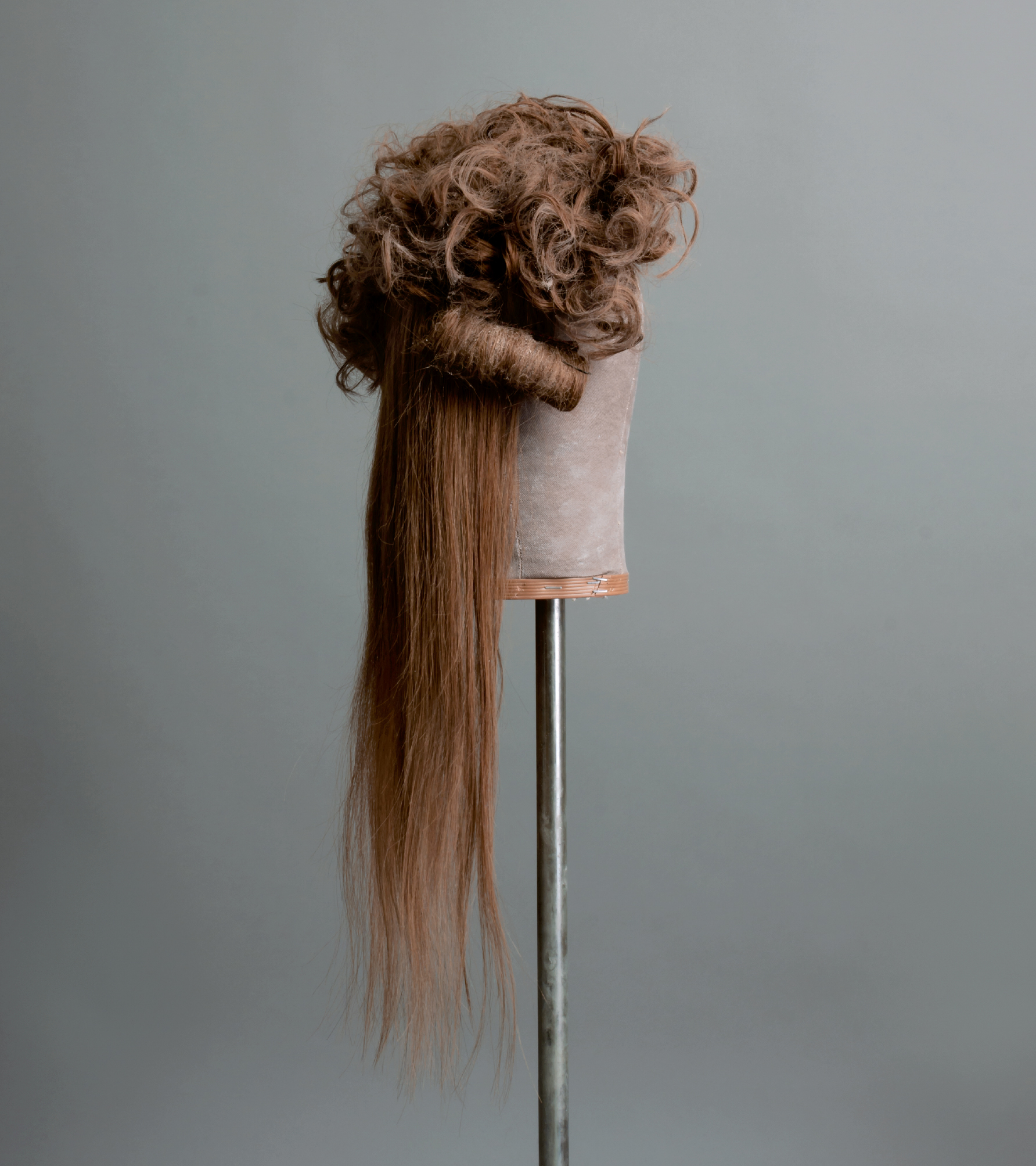
Contrary to popular modern belief, wigs were not the popular option for women in the eighteenth century. [1]
It’s easy to assume that because men wore wigs, women obviously did as well, but think about the portraiture that exists. When men are depicted wearing wigs, it is extremely obvious, but women in portraiture almost never have the appearance of an unnatural hairline. [2] Hair was a representation of youth, beauty and health for a woman, and thus it was important to keep one’s hair as well-nourished as possible. [3] When searching through the hairdressing manuals and advertisements from the period, the mention of full wigs being worn by women is minimal, at best, and is never the ideal. When you do find evidence of wigs, it’s usually a satirical tool to mock women’s vanity. Often the women depicted in these satirical prints are elderly, sick, poor or vapid—all unattractive traits in the eighteenth century. [4] For a woman, to be bald was to be ugly, and thus the target of mockery. [5] To put it bluntly, women wearing wigs were not as common as women dressing their hair. Did some women wear wigs in the eighteenth century? Absolutely! But did all women wear wigs? Absolutely not.
This isn’t to say that women didn’t use false hair to supplement their own. Some of the hairstyles you see in images cannot be achieved without fake hairpieces. Georgian hairstyling manuals are full of references to various types of falsies, and some books are even just thinly disguised advertisements for an array of bits and bobs sold by the authors. [6] William Moore, a hairdresser and perfumer in Bath, England, sold curls from 1 to 5 shillings a pair, long braids from 5 shillings to 2½ guineas, toupees from 3 to 14 shillings and cushions from 2 to 5 shillings. [7]
We recommend three very useful hairpiece types for your toilette—the chignon, the toupee and an assortment of buckles. Though most of the hairstyles in this book are demonstrated using the model’s real hair, quite a few are supplemented with falsies, particularly for the chignons and buckles. The use of hairpieces in any combination will greatly reduce your styling time and make possible a great many of these coiffures regardless of your hair length.
When creating your hairpieces, we only recommend using real human hair. This is because real hair responds to the pomade, powder, heat and wet setting we demonstrate in this book. [8] Read on for tutorials on making your chignon, toupee and buckles. Then take a crack at your favorite style, and see how easy it is to achieve with these very Georgian hairstyling hacks.